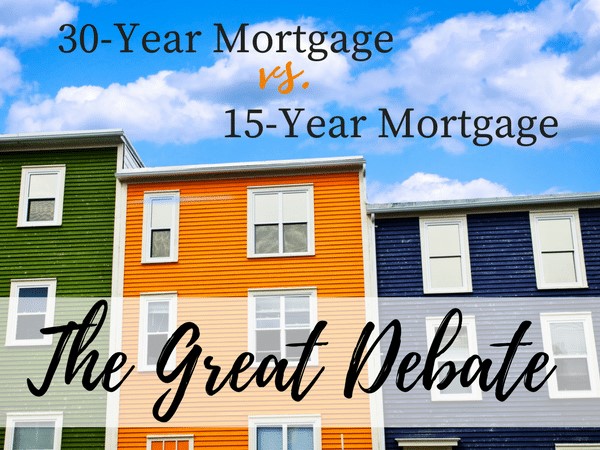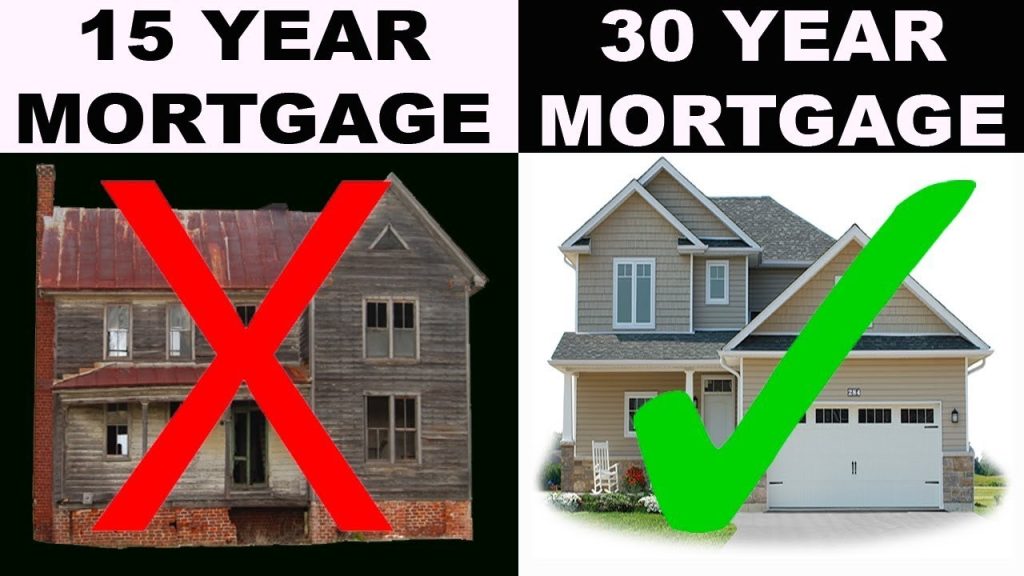15 or 30 Year Mortgage for Investment Property
Best way to get a Mortgage for Investment Properties over $1,000,000
September 30, 2022
One of the most important decisions property investors make when submitting a mortgage application is the loan duration. Despite the fact that the vast majority of buyers choose a 30-year mortgage, others use a 15-year mortgage to take advantage of the long-term benefits that a loan with a shorter term can provide. Although a 15-year mortgage requires larger monthly payments, the total interest paid is lower in the long run. This might result in homebuyers saving hundreds or thousands of money, making it a more sensible choice.
A 30-year mortgage might be better if you want to diversify your investments or invest in other areas like the stock market while still making monthly mortgage payments. The fact that a 30-year fixed mortgage will provide you more money each month for investing does not necessarily make it the best choice. However, both 15 and 30-year mortgage has their advantages, but harnessing them depends on your financial objectives and the situation surrounding you.
If you are confused about the loan term type, your specific situation and long-term financial objectives might help you determine which loan term is ideal. Also, this article will give you a clearer insight into the loan term that is right for you.
15-year Mortgage Loan Term
A mortgage with a term of 15 years has a fixed interest rate and monthly payment across the loan duration. Due to the potential long-term savings, most borrowers choose the 15-year mortgage over the popular 30-year mortgage. Today’s mortgage industry provides a variety of different types of mortgage programs. Relative to a 30-year mortgage, the 15-year mortgage does have some benefits and drawbacks.
However, there are some parallels between the two types of the loan term, such as the fact that the borrower’s credit score and credit history might affect the interest rate. A borrower’s probability of making payments is expressed numerically as a credit score. An individual’s credit score is influenced by several variables, including prompt payment, duration of credit history, and several active credit accounts. Obtaining a loan for 15 or 30 years also necessitates having sufficient money each month to pay for any prospective mortgage and other expenses.
30-year Mortgage Loan Term
A 30-year fixed-rate mortgage is a house loan with a 30-year repayment period and a fixed interest rate. A fixed-rate loan has an interest rate that doesn’t change during the mortgage. The 30-year mortgage loan term is the common or conventional loan term offered to lenders.
The government does not support conventional loans; nevertheless, obtaining a 30-year fixed FHA, USDA, or VA loan is feasible, which the government insures. These mortgages are beneficial for those who seek a lower minimum monthly mortgage payment or who intend to live in their homes for an extended period.
Factors to Consider when Choosing a Loan Term
Choosing a mortgage that best meets your financial needs is one of the most crucial aspects of buying a home. This calls for selecting the ideal mortgage length and obtaining the lowest interest rate. The mortgage term outlines the duration you have to complete the loan repayment. Although some lenders will allow you to take on terms as short as 8 or 10 years, the two most popular house loan durations that borrowers often have to choose are 15-year and 30-year mortgages. Making the appropriate decision for your financial objectives is crucial because 15-year and 30-year mortgages have benefits and drawbacks.

However, below are factors you should take into account when deciding whether to choose a 15-year and 30-year terms for a mortgage.
1. Budget
Practically, the longer the loan terms, the lower the monthly payments. The payments on a mortgage loan will be lower for borrowers with longer repayment periods than for those with shorter repayment periods for the same loan amount because mortgage loans are paid back in fixed, equal monthly installments during the loan. For instance, let’s look at a $480,000 mortgage with a 4% interest rate.
The monthly principal and interest payment for a 30-year loan are $2,291.06, excluding other costs like insurance. However, the monthly payment comes to $3,550.05 if they opt for a 15-year loan; this represents a $1,258.09 monthly difference. A 30-year loan term might be a better option if you foresee not having much room in your monthly budget to absorb a higher mortgage payment. This will allow you to spread your lesser monthly payments over a longer period.
2. Interest Goals
The fact that you will eventually pay more interest throughout the loan is a disadvantage of having a 30-year mortgage. Lenders often provide slightly higher rates for a 30-year mortgage and a longer length of time during which interest will be paid. The earlier the loan is paid off in full, the lower the likelihood that you would default payments.
Many borrowers might object to accruing higher interest over time and would rather avoid those costs by making a small increase in their monthly payments. A 15-year mortgage might be a better option for you if reducing your interest payments is your primary concern. When applying for a mortgage, ensure a good credit score if you want a reduced interest rate.
3. Home Equity
Home equity is the indication of your actual ownership percentage of the property. Placing a down payment and repaying the lender for the loan they extended to you to purchase the home are the two things you do when you take out a mortgage. For instance, if you only put down 20% on an $800,000 home, the lender effectively takes a larger share because you only contributed 20% of the total price. Another factor contributing to some borrowers preferring a 15-year mortgage is the fact that the more monthly payment you make, the faster you may accumulate equity.
Building equity in your house occurs due to making mortgage payments over time; at some point, you will own a larger portion of the property than the lender. If you use a HELOC to finance significant renovations or other substantial expenses, having a significant equity value in your house can be helpful. Gaining equity quicker can benefit you in achieving some goals more quickly because you can use the equity in your house through a HELOC to cover the down payment on an investment property.
4. Mortgage Duration Preference
Choosing a 15-year loan term has many advantages, including paying off your home 15 years earlier than choosing a 30-year mortgage. When you don’t have a mortgage loan, you’ll have more money for other things. For this reason, most homeowners may prefer to pay off their residential home as fast as possible to buy a second home and concentrate on paying off their mortgage for that one.
Another reason some people would want to pay off their debt as soon as possible is that they may simply find debt burdensome. To pay off your mortgage faster, choosing a 15-year term can yield a bit lower interest rate and more interest savings, but as an exchange, you’ll have to make larger monthly payments.

Advantages of a 15-year Mortgage
There are advantages to using a 15-year mortgage. However, let’s look at the benefits of using a 15-year mortgage.
1. Faster Loan Repayments
A 15-year mortgage requires much less time, but the monthly payment is greater. The benefits of a short loan term can go beyond just paying off the mortgage more quickly, depending on the buyer’s long-term financial goals.
2. Builds Equity Faster
Paying your equity faster helps you to build more equity in your home. Higher monthly payment leads to paying off more principal or mortgage and owning more in your home than your lender.
3. Reduced Fees
Banks view 15-year mortgages as less risky to approve because they are paid off faster than 30-year mortgage loans. Less risk implies lower charges for the lender to take.
4. Lower Interest Rates
In contrast to 30-year mortgages, lenders charge lower interest rates on 15-year mortgages due to their low level of risk. The likelihood of a borrower defaulting on a debt after 30 years is higher than after 15 years. As a result, the interest rate on a 30-year loan is higher than one with a 15-year term. A long-term loan with a lower interest rate can significantly reduce your total payback amount.
Disadvantages of a 15-Year Mortgage
Although a 15-year mortgage saves money on interest, borrowers should examine some drawbacks before choosing this loan term.
1. Higher Monthly Payments
Because the loan must be repaid in 15 years instead of 30 years, a 15-year mortgage has a larger monthly payment. For instance, the monthly payment for a $500,000 loan with a 15-year term and 4% interest is $3,698 as opposed to $2,387 for a 30-year term. This means that the 15-year loan has a monthly payment of 55% greater than the 30-year loans for the same loan balance and interest rate. Government-sponsored loans give most borrowers lower upfront fees, and they are likely to pay these costs as part of a higher interest rate.
2. Less Affordability
The larger payment can force the buyer to settle for a less expensive home than they might with a 30-year loan. Using the scenario mentioned above, assuming the mortgage lender will only authorize up to $3,000 each month, the borrower would have to purchase a less expensive home because a $400,000 mortgage at 4% for 15 years would require a $2,959 monthly payment.
However, a 30-year loan for $500,000 would result in a $2,387 monthly payment, which is significantly less than the $3,000 limit. Additionally, a 30-year loan would enable the borrower to purchase a larger home or take on a larger mortgage. For instance, a $2,865 monthly payment would be required for a 30-year mortgage on a $600,000 home. The 30-year loan lowers the monthly payment to under $3,000 while enabling the borrower to take on a larger loan, probably to purchase a larger home or move to a better neighborhood.
3. Less Money Going to Savings
It takes more financial reserves to cover the larger payment of up to one year’s worth of earnings in liquid savings. A borrower may also forfeit the chance to accumulate funds or save for objectives like retirement or paying for a child’s college tuition due to the increased monthly payment.
Taxes can be deferred on contributions to retirement and college savings accounts but not 401(k) plans, which are employer-funded. Furthermore, an intelligent and systematic investor would miss the chance to invest the balance between the 15-year and 30-year payments in higher yields.

Advantages of a 30-year Mortgage
Whether you are an investor looking to make a long-term commitment or a first-time home buyer, low-risk leveraging may help. Banks are less at risk with 15-year mortgages, but homebuyers are less at risk with 30-year mortgages. However, let’s look at the benefits of a 30-year mortgage term.
1. Higher Tax Deductions
Because of the larger interest paid on a 30-year mortgage, the tax deductions for mortgage interest payments are higher. Although not a significant benefit, this is something to take into account when running an investigation.
2. More Monthly Income Available for other Savings
With a 30-year mortgage, you have more funds available each month to help you achieve your targets, whether you want to invest or save more money. Because a 30-year mortgage’s debt is repaid over a longer time than a 15-year mortgage, the monthly mortgage payment will be significantly cheaper.
3. Lower Monthly Payments
Because the loan amount is stretched over a longer period, longer loan terms result in lower monthly payments.
Disadvantages of 30-year Mortgage Term
Some drawbacks to a 30-year Mortgage term include:
- Pay more in Interest: Given that the loan has a 30-year payback period, you will eventually pay more interest than you would if it had a shorter term.
- Not the best option if you intend to move in five or ten years: If you just stay for a short period, you may eventually pay a higher rate than you might have gotten with a different loan.
- Builds equity slowly: Building equity may take longer because just a small fraction of your monthly payment is applied to the principle during the first several years of your mortgage.
Practical Scenarios of 15 or 30- year Mortgage for Investment Property
Let’s take a practical look at a home mortgage of $1,000,000 with a 10% down payment ($200,000) and an assumed fixed rate of 4%. With a 30-year mortgage term, you will get a lower monthly payment, but in the long run, after the loan has been paid, the interest rate you had paid would accumulate to about $718,695.
For a 15-year mortgage, you will have higher monthly payments but lower interest rates. In this case, you will end up paying $331,438 as interest rates. This means that when you go for a 15-year mortgage term, you will save $387,257 in interest. But if you remain with a 30-year term, you’ll have an extra $2,623 monthly to devote toward other objectives and costs.

Tips for Managing Your Housing Costs
Despite the cost of homeownership, you shouldn’t let it prevent you from pursuing other objectives. You may cut your home costs, reinvest, pay your debt and save money for your plans by implementing the following steps:
- Consult a Professional: Financial advisors can help you examine your home expenditures and possibly identify savings in your budget by giving you the necessary advice. Finding a competent financial advisor need not be difficult. To choose which financial advisor is best for you, you can research local options and interview those that match your criteria.
- The volatility of mortgage rates is at an all-time high. To better understand the state of the market at the moment, study the table of mortgage rates provided by your lender.
- Look out for alternatives: Depending on your location, you should research the options that surround you and decide which financial decision is the best one.
- Remember to pay your property taxes: When considering a home purchase, don’t overlook property taxes. Property taxes might vary greatly depending on the location within the US you plan to purchase. Use the property tax calculator to estimate how much you might owe in taxes each year.
Conclusion
30-year mortgage terms are usually the preferred option for most homebuyers because they have lower monthly payments and can give borrowers more spending power. While some homebuyers prefer the 15-mortgage term because they can pay up their debt faster and focus on other investments, build equity faster, reduce the interest rate and be free from mortgage debt but the downsides come with higher monthly payments. If you find it challenging to handle the higher monthly payments, a 30-year mortgage should be your best bet. The choice of mortgage loan terms depends on your financial goal and personal circumstances.
However, if you are not sure of the situations surrounding you or you are looking for a financial advisor to help you through your decision-making process, you should contact Aurum and Sharpe. Aurum and Sharpe is a lending company that offers mortgage loans and financial advice to residential homebuyers and property investors. To get started with Aurum and Sharpe, visit our website or contact us at 9177404325 to book an appointment today, or use the online form.
Mortgage Rates
DSCR Mortgage: 7.375%
Commercial Mortgage: 7.5%
Single family, Condo Investment Property: 7.375%
Portfolio of Residential Homes: 7.5%
Calculate Your Monthly Payment
Mortgage Information
Monthly Payment
Principal and Interest: $0
Total Monthly Payment: $0


